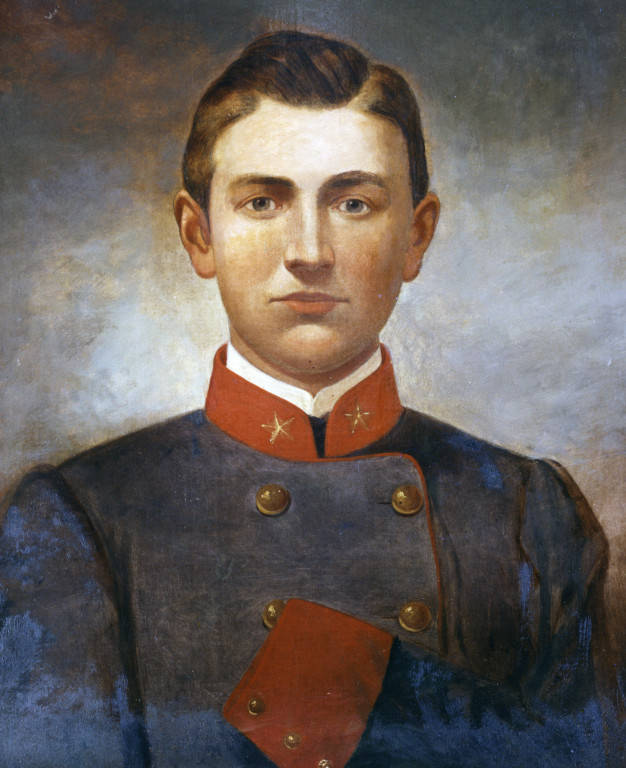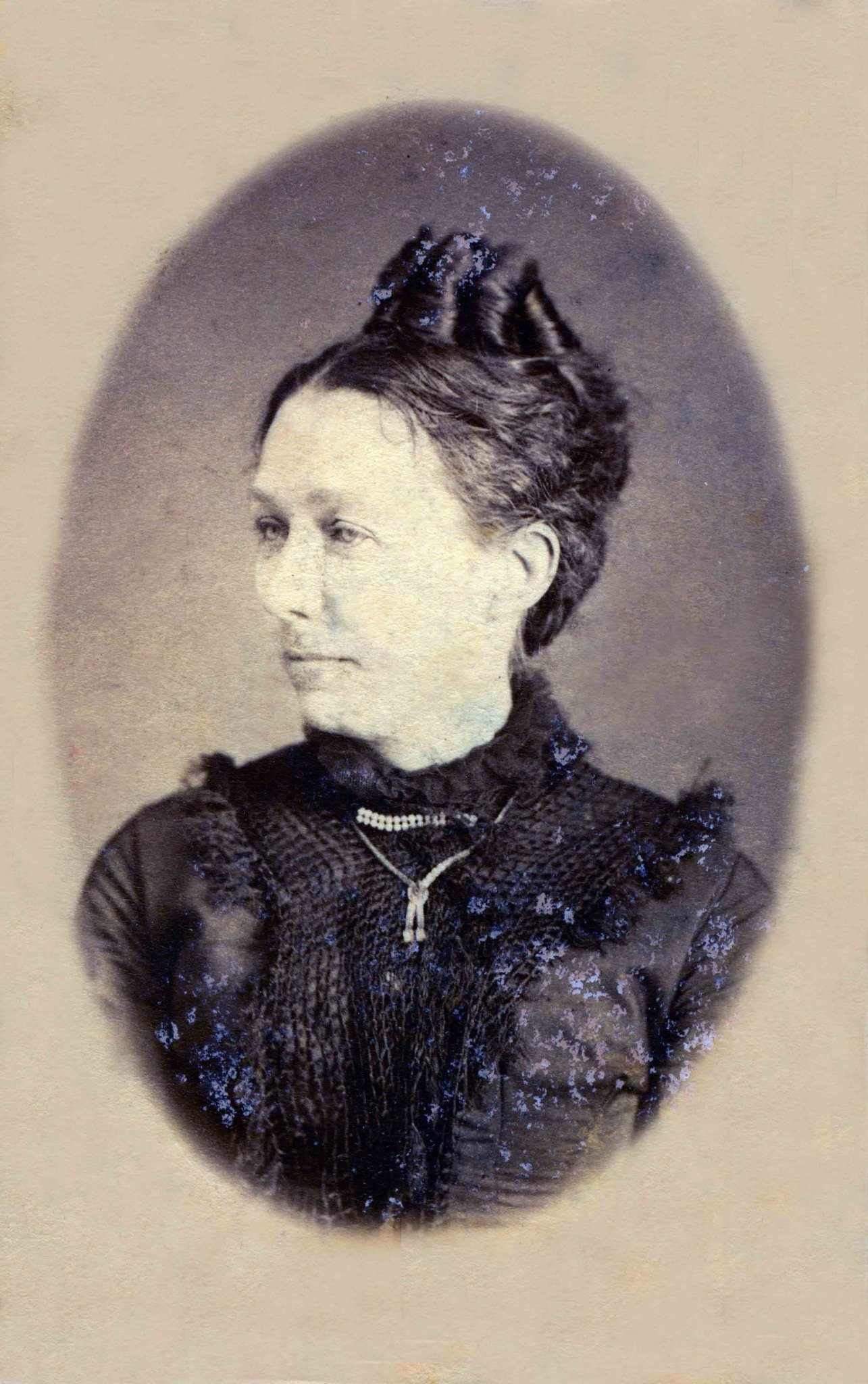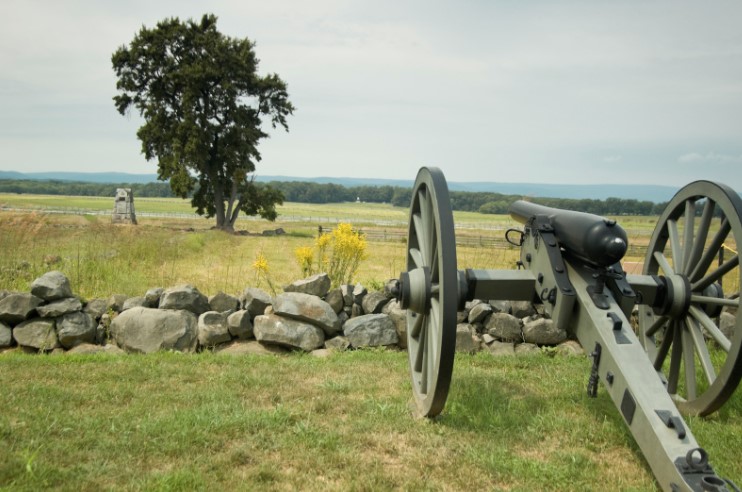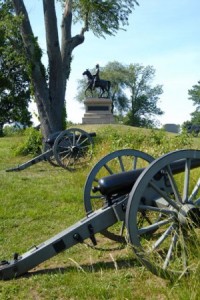Tag: Gettysburg Battlefield

Joseph Latimer and Benner’s Hill
April 8, 2025Joseph Latimer and Benner’s Hill
Joseph Latimer was Born on August 27th, 1843, in Prince William County Virginia. Latimer would go on to study at the Virginia Military Institute (V.M.I). During the beginning of the American Civil War Latimer would first serve as Cadet Drill Master for the Richmond Hampden Artillery. In the fall of 1861, he would be promoted to first lieutenant and would see action with Richard Ewells Division in the Shenandoah Valley Campaign 0f 1862. In March of 1863 he would be promoted to major at just 19 years old. Known for his small stature and young age the major was often called “The Boy Major” by men within the division.
Benner’s Hill is a small rise about 1,400 yards northeast of Cemetery Hill. At the time of the battle the crest of the hill was open with corn and wheat being grown on the hill. The hill was part of Christian and Susan Benner’s 208-acre farm (the family lived closer to Wolf’s Hill). On the first day of the battle the 35th Virginia Battalion of Cavalry would report Union forces near the hill. These forces would play a factor in delaying Richard Ewell on the evening of July 1st.
On the morning of July 2nd Major Latimer would ride along the Confederate left looking for a platform to allow his batteries to engage union batteries on Cemetery Hill and Culps Hill. He would eventually settle on Benner Hill his only real option. In the late afternoon the pieces of Latimer’s Battalion would open on Cemetery Hill and Culps Hill. His artillerymen would be outnumbered by the responding union pieces Benner Hill was quickly becoming a disastrous place to be. The 1 ½ hour duel would begin to tear apart Latimer’s guns. Near dusk some brigades of Major General Edward Allegheny Johnson would march through Latimer’s remaining guns on their way to Culps Hill (the guns would go quiet only for a few moments while this happens). Around this time Latimer would be struck by a piece of artillery shell that would pierce his left arm and kill his horse with the horse then pinning him to the ground. By the end of this fighting only 4 guns would remain on Benner’s hill.
The boy major would have his arm amputated and he was evacuated with the army to Winchester. Fearing the approach of the union army the confederates would move Latimer to Harrisonburg Virginia where his wound would eventually become gangrenous and he would die August 1, 1863, 3 weeks shy of his 20th birthday. The men who served with him would eventually purchase a headstone monument for his burial site. Benner’s Hill today is a quiet spot on the battlefield it is not as heavily visited as other popular spots on the battlefield but is just as packed with history as any spot on the battlefield. To reach Benner’s hill head east on York Street, continue straight onto the Hanover Road. Follow the Hanover Road and turn Right onto Latimer Avenue You are now at Benner’s Hill.
Sources
https://emergingcivilwar.com/2016/03/01/gettysburg-off-the-beaten-path-benners-hill/
https://gettysburg.stonesentinels.com/battlefield-terrain/benners-hill-terrain/
Myers, David Thomas, The Boy Major of the Confederacy, Joseph White Latimer, Sprinkle Publications, Harrisonburg, VA, 2006

The Strength and Bravery of Georgia Wade McClellan, Witness to the Battle of Gettysburg
March 13, 2025Georgia Wade was born July 4th, 1841, the daughter of James and Mary Wade. The oldest of six children Georgia would go to school and help earn money sewing in her fathers tailoring shop. On April 15th,1862 Georgia would marry John Louis McClellan. The couple would rent the northern side of a duplex on Baltimore Street just a few hundred yards from the Evergreen Cemetery. John Louis McClellan would volunteer to serve in the 165th Pennsylvania Volunteer infantry in 1863 (9-month Regiment). Before John would leave for the army Georgia would become pregnant with the couples first child. That child Louis Kenneth McClellan would be born on June 26th, 1863, just 5 short days before the battle of Gettysburg.

Battlefield Highlights: Where the Battle Began – Buford Holds The High Ground
May 30, 2023Have you ever wondered about the pivotal moments that shaped the outcome of the American Civil War? One such moment occurred on the first day of the Battle of Gettysburg.
General John Buford’s actions on that first day at Gettysburg were crucial in determining the final outcome of the battle. By holding the line against Confederate forces, he helped buy time for the Union army to reinforce its position, an action that ultimately determined the course of the entire conflict.

Revisiting Pickett’s Charge: Marching into the Fire
March 30, 2023The Battle of Gettysburg is often identified as the definitive turning point in the American Civil War. Fought from July 1st to July 3rd, 1863, in and around the Pennsylvania town from whence it takes its name, the famous battle resulted in the loss of over 50,000 soldiers on both sides, making it one of the bloodiest engagements in American history.
One of the most famous and controversial moments of the battle was “Pickett’s Charge,” a failed Confederate direct assault against the Union battlefront that has since become a symbol of gallant bravery and terrible sacrifice. Even today, 160 years later, the grim details of that terrible feat still echo across the empty fields where that final, brutal charge took place, and where so many desperate Confederate soldiers faultlessly obeyed their orders to march into the fire.
Gettysburg Bus Tour FAQ’s
March 15, 2016 Spring begins this weekend and soon our bus tours will be out in full force leading numerous history enthusiasts throughout the Gettysburg Battlefield. Traveling the historic fields of Gettysburg with one of our friendly licensed battlefield guides provides visitors with a unique experience that brings history to life.
Spring begins this weekend and soon our bus tours will be out in full force leading numerous history enthusiasts throughout the Gettysburg Battlefield. Traveling the historic fields of Gettysburg with one of our friendly licensed battlefield guides provides visitors with a unique experience that brings history to life.
We often get a few questions about our tours, so we decided to put together this quick Q&A section to hopefully cover anything you may want to ask. We hope you find this list helpful as well.
- How long are the Gettysburg bus tours?
- Our bus tours are two hours and board five minutes before the scheduled time. Departure is from the Gettysburg Tour Center at 778 Baltimore Street, which is across from the National Cemetery.
- What do the bus tours cover, and what do we see?
- On your trip we will cover all three days of battle as we travel through the Gettysburg Battlefield.
- Do you get off the bus during your tour?
- We make at least one restroom and refreshment stop. If you’ve chosen one of our licensed guided tours we leave the scenic stop option up to your guide to determine where it will be. Sometimes you may make more than one scenic stop. If you choose the dramatized audio bus tour, your scenic stop will be at Little Round Top.
- Where can I book a tour?
- Reservations can be made by calling our toll free number at 877-680-8687. You can also purchase them online through our “Schedule a Tour” link above that takes you to a helpful calendar that lists all the tours that are available.
- Do you offer group tours (for schools, teams, organizations, etc)?
- We certainly do! Group tours can be booked through Gettysburg Group Reservations at 800-447-8788. You can learn more through the “Plan Your Trip” link on our website.
- What are the different bus tour options?
- We offer three different types of bus touring options. These include the licensed guided bus tour (in an enclosed bus with heat or air-conditioning depending on the time of year), a licensed guided double decker tour (weather permitting), or a dramatized audio bus tour (weather permitting on our famous double decker tour bus).
We hope this list covers all of the questions you may have had about Gettysburg Bus Tours, but we also understand you may have more. If any of your questions remain unanswered feel free to leave a comment below or contact us and we’ll be happy to answer them for you!
Battle of Gettysburg FAQ’s
August 20, 2014When you are dealing with such rich historical series of events like the Battle of Gettysburg, there may be some questions that pop up as you learn more about this fascinating junction in our nation’s history. Our tour guides go through a rigorous testing process that allows them to answer just about anything you might want to know. In speaking with them and talking with people who are planning on a visit, we’ve put together a list of some of the most common questions we get each day shed some light on this famous battleground.
- Where is the Gettysburg Battlefield?
- The Gettysburg Battlefield is located in Adams County, Pennsylvania, and covers areas around and throughout the borough of Gettysburg.
- How large is the National Park at Gettysburg?
- The National Park at Gettysburg covers roughly 6000 acres!
- How many monuments are on the Gettysburg Battlefield?
- There are a wide range of monuments on the Gettysburg Battlefield and we encourage you to see them all! Offering around 1328 monuments to see, you may need more than a one day trip to see them all.
- Who put the monuments on the Gettysburg Battlefield?
- Was there fighting in the town of Gettysburg?
- There was some fighting in the streets of Gettysburg. Fortunately there was only one civilian casualty during the three days of battle. Unfortunately it was a young girl who was killed when a stray bullet came through two doors and struck her in the back killing her instantly. You can learn more about Jennie Wade and the Jennie Wade house on its history page here.
- Are there any homes or buildings that were here during the time of the battle?
- There are numerous homes and buildings that were here during the battle, and some still bear the scars from the fierce fighting that occurred. You can identify these homes or buildings by locating the small plaque between the doors and windows of the building that all say, “Civil War Building 1863.”
We hope this list covers one or more of the questions you may have had about the Battle of Gettysburg, but also understand you may have many more. If you’d like to see them covered in a future blog or want to reach out and find out for yourself, feel free to use our contact page and we’ll be happy to answer them for you!
